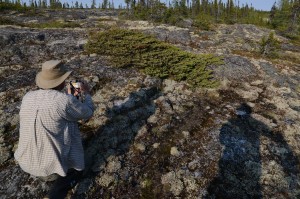
By Maxim Larrivée
Summer is here and many of us are eager to get out butterflying with our cameras to bring images home to share with our butterflying buddies. While I don’t fancy myself as an expert photographer, I sure love to photograph butterflies and other insects. I realized over time that many tricks I took for granted to approach butterflies were foreign to many naturalists especially those new to it. After sharing some tips on how to approach butterflies and better photograph them with friends and colleagues and seeing them come back with much improved results and more species than they use to find, I thought this might be helpful to share.
Here are my 10 steps to better butterfly photography. Note these tips apply to any kind of camera from a smartphone to a professional DSLR with a macro lens. It isn’t always about the camera!
- Take a first photo of the butterfly even if you are far away. If it flies away as you approach more closely, you still have a good chance of identifying it later and capturing a voucher image for eButterfly.
- If a butterfly flies away, don’t follow it right away. Simply wait for it to land again. Chances are it will land exactly on the same spot where it was or close by. Most butterflies are territorial and you have invaded their territory. They generally quickly realize that this large mammal is not scared and is not going anywhere so they go back to their business at a safe distance. Skippers (Hesperiidae) are notoriously territorial and will buzz you with a very fast flight but after a few seconds will often land exactly on the same twig!
- Always approach a butterfly slowly one step at a time from behind whenever possible.
- As you get closer to the butterfly, make yourself smaller and take another photo just in case. I often end up on my knees or even laying on my stomach.
- Never cast a shadow on the butterfly, it will fly away almost certainly.
- Always try to be perpendicular to your subject. This will ensure that all of it is in focus when you snap the photograph.
- Lean on something to stabilize yourself whenever possible when photographing butterflies hand held. I also often put my strap around my neck and arm and push on it to create a tension and reduce vibrations caused by my hands and arms shaking. Hold your breath as you take photos can also help.
- Take as many photos as you can. With digital cameras it does cost any more money to do so!
- For those who can control aperture and shutter speed on their camera, try to have the smallest aperture (highest number on the dial) and the fastest shutter speed so you get as much depth of field as possible. I always shoot at f8 or higher and with a minimum shutter speed of 1/200. Newer cameras have amazing ISO capacity to increase your shutter speed in lower light conditions without creating excessive noise on your image.
- Get outside and practice! And add your checklists to eButterfly of course.